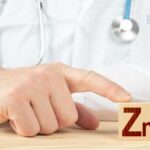Table of Contents
- Nano calcium has almost 100% absorption.
- Codeco NanoCal – World’s First Nano Calcium
- Apacal® prevents bone loss in postmenopausal women.
- Use of ossein-hydroxyapatite complex in the prevention of bone loss: a review
- Efficacy of ossein-hydroxyapatite complex compared with calcium carbonate to prevent bone loss: a meta-analysis
- Nutritional strategies for skeletal and cardiovascular health: hard bones, soft arteries, rather than vice versa
- References
Nano calcium has almost 100% absorption.
Nano calcium can permeate intra-cellular membranes.
The nano size calcium particles are believed to easily be absorbed, leading to a nearly 100% absorption rate. This is while the rate is reported to be as low as 10% to 15% for the normal products. This high absorption is also believed to reduce the production of undigested calcium and thus kidney-related side effects and stones commonly reported in certain calcium supplement consumers.
Some companies claim their products dissociate before entering the body. In other words, instead of being dissolved in the stomach, these products are ingested in solution as they are already ionized (calcium ions and negative hydroxyl (OH-)) and therefore can permeate intra-cellular membranes, bypassing normal channels that might be compromised due to underlying diseases. Their uniform shape also helps with them becoming dissolved and ionized more rapidly.1
Codeco NanoCal – World’s First Nano Calcium
Nanocal has a very small size and high absorption.
Nanocal reduces the complications of kidney stone accumulation.
Revolutionary Calcium Supplement Proves Effective for Treatment of Musculoskeletal & Autoimmune Diseases With an Absorption Rate of 100%, NanoCal Can Effectively Treat Osteoporosis, Hypothyroidism, Alzheimer, and Numerous Forms of Cancer.
Sharing his expert views regarding the absorption value of calcium supplement and how it can drastically magnify the effectiveness of the product, the spokesperson said, “Consuming calcium is not about how much or how often you take it. Calcium is all about absorption. Most generic supplements offer an absorption rate that ranges somewhere between 30 to a rare 70 percent. This means the rest of the calcium is excreted out. Most importantly, the amount that gets absorbed is hardly enough to meet the daily calcium requirement, let alone the requirement of those who already are suffering from a deficiency.”
According to the spokesperson, understanding the technical aspects of the patented nano technology used for NanoCal can help realize and accept the benefits of NanoCal. While numerous health supplement manufacturers have used nano technology to produce calcium supplements, Codeco is the first company to introduce a patented technology that can produce calcium nano particle sized 30-900nm. When compared to generic calcium products, NanoCal particles are 100,000 times smaller. A microscopic comparison of NanoCal particle and calcium particle from a generic product also reveals a significant difference in the shape of the particle. The NanoCal particles are a much smoother spherical shape in contrast to the irregular and spiky shape of the latter. The smoother shape aids faster and better absorption.
Utilizing the award-winning advanced nano technology, Codeco has ensured efficiency as well as safety of their natural calcium supplement. High absorption rate of NanoCal eliminates the risk of calcium accumulating in kidneys and other organs. Moreover, the product is free of harmful additives including chromium, lead, barium, mercury, sugar, gluten, and yeast. “At Codeco, the safety and wellbeing of our customers is our very first concern. We strive hard to minimize, if not eliminate, the side effects and risk factors of our products. All of our products, including NanoCal, are all-natural nutritional supplements that are safe for everyone,” the spokesperson added.2
Apacal® prevents bone loss in postmenopausal women.
Objective: To evaluate, in postmenopausal women who refuse hormone replacement therapy (HRT), whether continuous administration of an osseinhydroxyapatite compound (OHC) reduces bone loss and protects from osteoporosis.
Study design: Sixty postmenopausal women were included in an open study and were allocated to three groups. The first group (n = 19) received treatment consisting in 3.32 g/d of OHC per day, the second group (n = 21) received 2.5 g of calcium carbonate per day, and the third group (n = 20) was a treatment-free control group. Bone mineral density (BMD), assessed by dual x-ray absorptiometry, was measured prior to and at 12 and 24 months of treatment.
Results: Subjects on OHC therapy did not show significant changes related to baseline on bone mass across the study, whereas a significant decrease was detected in the calcium carbonate group during the second year (-3.7%, P < .05) and in the control group at the first and second BMD measurement (-3.5%, P < .05; -5.6%, P < .01).
Conclusion: Continuous administration of OHC prevents bone loss in postmenopausal women, suggesting that this drug may be useful in the management of postmenopausal bone loss.3
Use of ossein-hydroxyapatite complex in the prevention of bone loss: a review
in patients with rheumatoid arthritis and chronic renal failure treated with OHC, an analgesic effect and an improvement of well-being.
Background and objective: The ossein-hydroxyapatite complex (OHC) is a microcrystalline form of calcium which provides a number of additional minerals (magnesium, phosphorus, potassium, zinc), and proteins (osteocalcin, type I collagen, type I insulin growth factor I and II, transforming growth factor beta) associated with bone metabolism. The objective of this review is to examine the role of OHC in preventing bone loss in different conditions.
Material and methods: A review of clinical trials assessing the relationship between OHC and bone loss was made using the following data sources: Medline (from 1966 to December 2013), the Cochrane Controlled Clinical Trials Register, Embase (up to December 2013), contact with companies marketing the supplements studied, and reference lists.
Results: Different randomized, clinical trials and meta-analysis suggest that OHC is more effective than calcium supplements in maintaining bone mass in postmenopausal women and in different conditions related to bone loss. In addition, OHC improves pain symptoms and accelerates fracture consolidation in patients with osteopenia or osteoporosis.
Conclusion: The ossein-hydroxyapatite complex is significantly more effective in preventing bone loss than calcium carbonate.4
Efficacy of ossein-hydroxyapatite complex compared with calcium carbonate to prevent bone loss: a meta-analysis
Apacal® to be more effective than CC in maintaining or increasing BMD in participants with normal or reduced BMD.
Apacal® is also used to prevent and treat osteoporosis and to regulate the calciumphosphorus balance in situations such as pregnancy and breast-feeding.
Objective: There is increasing evidence to suggest that ossein-hydroxyapatite complex (OHC) is more effective than calcium supplements in maintaining bone mass. The aim of this meta-analysis was to determine whether OHC has a different clinical effect on bone mineral density (BMD) compared with calcium carbonate (CC).
Methods: A meta-analysis of randomized controlled clinical trials was carried out to evaluate the efficacy of OHC versus CC on trabecular BMD. We identified publications on clinical trials by a search of electronic databases, including MEDLINE (1966-November 2008), EMBASE (1974-November 2008), and the Cochrane Controlled Clinical Trials Register.The primary endpoint was percent change in BMD from baseline. Data were pooled in a random-effects model, and the weighted mean difference was calculated. A sensitivity analysis that excluded trials without full data was performed.
Results: Of the 18 controlled trials initially identified, 6 were included in the meta-analysis. There was no significant heterogeneity among the included trials. The percent change in BMD significantly favored the OHC group (1.02% [95% CI, 0.63-1.41], P < 0.00001). These results were confirmed in the sensitivity analysis.
Conclusions: OHC is significantly more effective in preventing bone loss than CC.5
Nutritional strategies for skeletal and cardiovascular health: hard bones, soft arteries, rather than vice versa
Ingestion of microcrystalline hydroxyapatite produces compared to soluble calcium salts may be less likely to increase vascular calcification and coronary risk.
The focus of this paper is to explore better strategies for optimising bone strength and reducing risk of fracture, while at the same time decreasing risk of cardiovascular disease. The majority of Americans do not consume the current recommended dietary allowance for calcium, and the lifetime risk of osteoporosis is about 50%. However, traditional mononutrient calcium supplements may not be ideal. We comprehensively and systematically reviewed the scientific literature in order to determine the optimal dietary strategies and nutritional supplements for long-term skeletal health and cardiovascular health. To summarise, the following steps may be helpful for building strong bones while maintaining soft and supple arteries: (1) calcium is best obtained from dietary sources rather than supplements; (2) ensure that adequate animal protein intake is coupled with calcium intake of 1000 mg/day; (3) maintain vitamin D levels in the normal range; (4) increase intake of fruits and vegetables to alkalinise the system and promote bone health; (5) concomitantly increase potassium consumption while reducing sodium intake; (6) consider increasing the intake of foods rich in vitamins K1 and K2; (7) consider including bones in the diet; they are a rich source of calcium-hydroxyapatite and many other nutrients needed for building bone.6
References
- Nano calcium supplements: Friends or foes? P Khashayar, A Keshtkar, M Ebrahimi, B Larijani Bone Biol. Osteoporosis 1, 32-33
- Codeco NanoCal – World’s First Nano Calcium – Monday, August 17, 2015
- Preventing postmenopausal bone loss with ossein-hydroxyapatite compounds. Results of a two-year, prospective trial. C Castelo-Branco 1, et al. The Journal of Reproductive Medicine, 01 Jul 1999, 44(7):601-605
- Use of ossein-hydroxyapatite complex in the prevention of bone loss: a review. Castelo-Branco C, et al. 2015 Feb;18(1):29-37. doi:10.3109/13697137.2014.929107. Epub 2014 Aug 17.
- Efficacy of ossein-hydroxyapatite complex compared with calcium carbonate to prevent bone loss: a meta-analysis. Camil Castelo-Branco, et al. 2009 Sep-Oct;16(5):984-91. doi: 10.1097/gme.0b013e3181a1824e.
- Nutritional strategies for skeletal and cardiovascular health: hard bones, soft arteries, rather than vice versa James H O’Keefe, et al. 2016 Mar 22;3(1):e000325. doi: 10.1136/openhrt-2015-000325.



